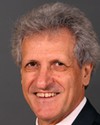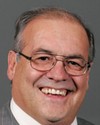I would like to thank you for having invited me. My name is Nathalie Des Rosiers, and I am here on behalf of the Canadian Civil Liberties Association. The first part of my presentation will be in French, and the second in English.
The Canadian Civil Liberties Association is a non-profit organization that is recognized for its work on issues related to civil liberties in Canada. The organization was founded in 1964, and its expertise has been recognized both by the courts and House of Commons.
In our view, four security models are the subject of the current debate on airport security. The first, relatively new model is based on what I would call "profiling", which is an Israeli model that makes use of behavioural profiling techniques in order to subject certain types of people to more in-depth investigations. The profiling model imposes a greater burden on some passengers and less on others. We suppose that this type of regime gives preferential treatment to some in order to avoid long line-ups. This first model identifies certain passengers and places them in different security categories.
The second model is what I would call the "technological" security model, which relies on increasingly sophisticated detection techniques that apply to all passengers in order to ensure the highest level of security. The recent investment in body scanners, following the events of last December, would fall into this category.
The third model relies more on random testing, on the unpredictability of search methods and implementation, which may prevent potential terrorists from figuring out the system and getting around it.
The fourth model is more dependent on intelligence services in order to detect terrorist networks and prevent their members from entering airports and boarding planes. Our association is particularly concerned with Canada's passenger protection program. I will come back to that later.
My presentation will look at these four systems and outline what are the concerns of a civil libertarian with each one of them, and what are some of the recommendations that you should look at, whether you choose any one of them. We suspect that probably we'll be in a mode where there will be different visions that may be applied to different airports, but certainly these visions are not mutually exclusive. In any event, each system requires that civil liberty concerns be addressed.
On the pros and cons of the profiling model, the first model, I think many people are skeptical about the idea of adopting the Israeli model, pointing out that the level and types of threats differ between Canada and Israel. According to them, threats against the Israeli airports are more frequent, at a type of higher level, and focus on one particular political situation, whereas Canada may have a lower level of threat but certainly a more diffuse type of threat.
Extremists will vary, and I think I join my colleagues here in thinking that the designation of the airport security should be made not with one type of terrorist in mind, but in recognizing that our history has included also the Air India disaster and other internal political conflicts. I think we should be careful, as we design the model, to assume that the threat of terrorism is just like the ones affecting other countries and, more importantly, that it will remain the same.
With each new wave of immigration, one may imagine that new conflicts may transform themselves and radicalize conflicts leading to terrorism. My point is simply that we ought not to design the system with only September 11 or December 25 in mind.
There are many objections to profiling, behavioural or other. In the Israeli model that has been presented to us, it invites workers, after training, to go with their hunches a bit and to watch all travellers, to spot the people who would present traits of edginess, nervousness, and act on these hunches to interview and inspect more fully the travellers so identified.
In our view, this certainly has the potential for engaging in racial profiling of the worst kind and engaging many false positives. This proposal has the potential of disrupting always the same kinds of people: the young Arabic-looking man or the people with a fear of flying or people with mental illness, the people who display some awkwardness in airports.
Profiling by country, which is another aspect that comes out in this, is equally as reprehensible, if not more. The image of a young Canadian soccer team arriving at the airport and being split into whether people are indeed born in Canada or born elsewhere is unacceptable, I think, in our imagery. It is indeed also against common sense, I think, to fail to recognize that we need community engagement to identify potential terrorists and not to marginalize them. So profiling by country of origin and country of destination seems to be counterproductive.
In our view, other preferable alternatives exist. I will get to them in a minute. But if you are going to consider profiling in any way, we urge you to do the following.
The model must be vetted by the Canadian Human Rights Commission. It must ensure against the possibility that racial profiling will be done. It must be constantly evaluated for its impact on travellers, particularly with respect to race, age, and religion.
It must provide--and I will come back to this a couple of times in my presentation--for some compensation for the travellers who, because of having been wrongly identified, suffer inconvenience or miss their flights or suffer other serious inconveniences. In my view, we have to start thinking that this is like a vaccination. If we're going to display a model where some people will be identified for the benefit of all, then we should ensure that they are compensated and that they don't have to spend years of fighting to get some recognition for what they have suffered.
The profiling model is also applied in the positive sense, with the possibility of safe travellers having special passes to forego all screening or to minimize screening. Again, this may be worrisome, I assume, because we would expect that savvy future terrorists may be able to acquire the special passes.
Just to summarize, our concern on the profiling regime being put forward is that it may lead to racial profiling, whether they admit it or not, and it should be evaluated clearly on that basis. We should not skirt our responsibility to look at that.
The technological model applies universally and does not have the potential drawbacks that I just explained. However, it raises three types of issues.
First, as we've discussed several times, are the privacy concerns and the risks of what I would describe as malfunction and malfeasance.
Any time you have a technology, there is the risk that it will not function properly. Therefore, with the body scanners, the concern that the CCLA has expressed several times is that even if the images are supposed to disappear quickly, there is indeed a risk that they will be circulated.
There's also the risk of malfeasance. Someone watching famous people—some of you may be coming to the airport—might take the image and make some money from it.
There is a risk for privacy when we invest in technology, particularly when it's a technology that is more and more invasive.
I think there is a great sense that there are false positives; the last time I appeared, we mentioned the Kelowna experience. When we looked at the Kelowna report, in our view it showed a really high degree of false positives. It could be with training that this will decrease. It was 68% for false positives, according to the report. It seemed to us that this was a pretty high level. Now, maybe with training, this will be reduced. Nevertheless, false positives, again, are not an efficient way of doing security. This may also lead to a false sense of comfort in the travelling public.
In a way, it's an expensive system, because there's no end in sight. There's an exponential growth of security apparatus that could be invented. At some point, I think, we have to arrive at the point where we decide whether the marginal costs are sufficient to warrant it, both the cost to privacy and the cost to the travelling public.
I think if you are going to go this way and continue to recommend further involvement and investment in privacy-invasive technology, it is important that the privacy commissioners continue to be involved and that the safeguards to protect privacy continue to be in place. In our experience with body scanners in other airports outside of Canada, after a number of years the possibility of choice is no longer there. It becomes a matter of routine and the initial safeguards are forgotten. So if you're going to go this way, make sure they continue to be evaluated.
I have one minute left. On the third model, randomness, in our view, we think that constantly varying the randomness of the testing may defuse terrorist action and so on.
I want to finish on the pros and cons of the intelligence model and simply refer you to our previous submissions on passenger protection problems. I urge you to adopt a legislative framework for this. In our view, the passenger protection program as it now exists is unconstitutional. It is a violation of the right to mobility and liberty and it is not prescribed by law. It is not prescribed by a statute.
I think it is the responsibility of Parliament to enact a passenger program, and if they decide to do so, it must be a no-fly list that is bound by the rule of law and does provide for some procedural safeguards. Indeed, we now have some experience in designing programs where you need to have special advocates. Certainly, again, my plea would be that it is important that this not be left simply as an administrative program, but that it be scrutinized by Parliament and established through this.
Merci beaucoup.




